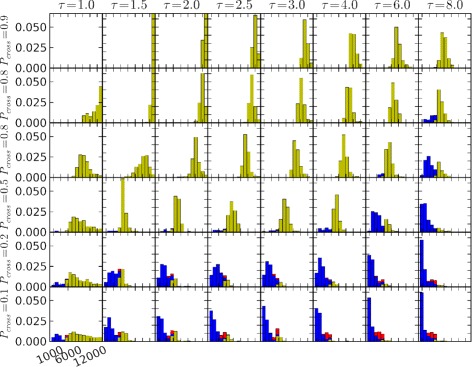Figure 7.

Tabulated outcomes of simulated male moths seeking a pheromone source: variation with memory timescale, τ, and plume-crossing probability, P cross. The array of graphs represents a matrix, with columns corresponding to memory timescales τ= [1,1.5,2,2.5,3,4,6,8] and rows corresponding to plume-crossing probability, P cross= [.125,.25,.5,.75,0.85,0.95]. For all moths, . Data comprise 28 replicate plumes, with 8 replicated moth trajectories in each plume for each combination of τ and P cross, for a total of 10752 moth trajectories. Otherwise, interpretation of plots is the same as in Figure 6. These plots suggest combinations of these two parameters that lead to relatively high plume source location probability lie below a diagonal line extending roughly from the lower left to the upper right of the plot matrix. Source location is much less successful above this line, due to the prevalence of “undershoots”. The increasing incident of “overshoots” (red bars) at the bottom right of the plot matrix suggests that the corresponding parameters may be at or near the limits of effective source-seeking behaviors.
